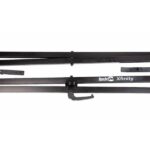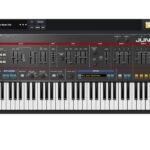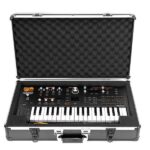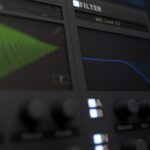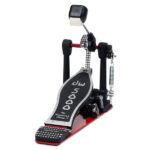On the surface, Sub 37 and Subsequent 37 may seem identical. However, there is a lot more difference than is apparent at first glance.
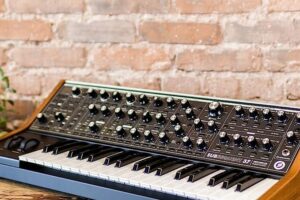
Here is a detailed comparison between the Sub 37 synthesizer and the Subsequent 37.
Contents
What is the Sub 37?
The Sub 37 is a monophonic analog synthesizer produced by Moog Music. It is a highly regarded instrument known for its rich and classic Moog sound.
The Sub 37 features two oscillators with variable waveforms, including classic waveforms like sawtooth, square, and triangle.
It can create custom waveshapes. It also offers a 37-note velocity-sensitive keyboard, which is where it gets its name from.
What is the Subsequent 37?
The subsequent 37 is also an analog synthesizer produced by Moog Music. However, It is an evolved version of Sub 37.
It incorporates several enhancements and additional features. The subsequent 37 builds upon the foundation of Sub 37 while offering expanded capabilities.
It features two voltage-controlled oscillators (VCOs) that can generate a wide range of waveforms.
Sub 37 vs. Subsequent 37
Basically, the Sub 37 is a powerful and versatile synthesizer loved by musicians and sound designers alike. It offers a wide range of sonic possibilities and a distinct Moog sound.
The subsequent 37 is an updated version of Sub 37. It provides an enhanced user experience with added features and improvements.
The Sub 37 and the subsequent 37 are both synthesizers manufactured by Moog Music, but they have some key differences. Here’s a comparison between the two:
Design and Build
The Sub 37 is an earlier model, while the subsequent 37 is an updated version with some improvements. Of course, in terms of aesthetics, they have a similar layout and design.
They both feature robust metal construction and high-quality components.
The Subsequent 37 features several hardware upgrades that enhance the instrument’s sound quality and performance.
These upgrades include improved mixer headroom, optimized filter resonance, and a higher output stage. All these result in a more powerful and refined sound.
Polyphony
The Sub 37 is a monophonic synthesizer. This means it can only play one note at a time.
The subsequent 37, on the other hand, offers para-phonic capability, allowing you to play two notes simultaneously.
Sound Engine
Both synthesizers feature the same basic sound engine and architecture, which is based on Moog’s classic analog circuitry.
They offer a wide range of sound-shaping options and classic Moog characters.
Modulation
The subsequent 37 offers enhanced modulation capabilities compared to the Sub 37.
It has double the amount of modulation sources and destinations, allowing for more intricate sound design possibilities.
This allows for more intricate and expressive sound shaping.
Expanded Connectivity
The subsequent 37 has expanded connectivity options compared to the Sub 37.
It features an additional four assignable CV outputs in addition to the standard Pitch, Volume, and Gate outputs found on Sub 37.
These additional CV outputs make it easier to integrate with modular synthesizers and other external gear.
Subsequent 37 provides four assignable CV outputs in addition to the standard Pitch, Volume, and Gate outputs found in Sub 37.
Presets
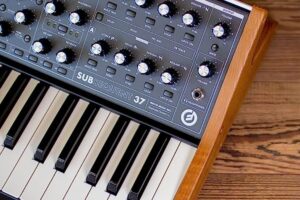
The subsequent 37 has double the number of presets compared to the Sub 37. It provides more factory and user-defined patches to choose from.
Limited Editions
Moog has released some limited edition versions of the subsequent 37, such as the “CV” edition.
This edition features additional control voltage inputs and outputs, expanding its modular integration capabilities.
This Moog’s latest limited edition offers about 2000 copies globally.
Multidrive Circuit
The subsequent 37 includes the Multidrive circuit, which is not present in Sub 37.
The Multidrive adds more grit and saturation to the sound, allowing for even more aggressive and saturated tones.
Envelope Tweaks
Both Sub 37 and Subsequent 37 offer two envelope generators. One for the amplifier (ADSR) and one for the filter (ADSR).
The subsequent 37 provides additional envelope controls, allowing for further customization of the ADSR envelopes.
This offers more precise shaping of the sound’s attack, decay, sustain, and release characteristics.
Enhanced Keybed
The subsequent 37 features an upgraded keybed compared to the Sub 37.
It includes a premium Fatar keybed with enhanced velocity and after-touch sensitivity, providing a more expressive playing experience.
Sync Functionality
Both Sub 37 and Subsequent 37 feature a Sync input. This allows you to synchronize the synthesizer’s oscillator(s) to an external clock or source.
The subsequent 37 introduces a sync feature that enables synchronization between the two oscillators.
This allows for the creation of rich, harmonically complex sounds by locking the frequencies of the oscillators together.
The Subsequent 37 offers three sync modes: Mono, Duo, and Unison.
In Mono mode, the sync signal is applied to both oscillators, while in Duo mode, the sync signal affects only oscillator 2.
Unison mode disables the sync functionality entirely. Sub 37, on the other hand, does not have dedicated sync modes.
Firmware Updates

Moog has released firmware updates for both the sub and subsequent 37, adding new features and improvements over time.
These updates have enhanced the functionality and performance of the subsequent 37, providing users with additional capabilities and refinements.
Moog Music typically provides firmware updates as downloadable files on their official website. Users could download the update, and follow the instructions provided by Moog.
Price
The subsequent 37 is generally priced higher than the Sub 37 due to its added features and enhancements.
The price difference may vary depending on the specific edition or version of the subsequent 37.
Accessories
Both the Moog Sub 37 and Subsequent 37 have a range of accessories available to enhance their functionality and performance.
While the Subsequent 37 itself is a standalone synthesizer, there are several accessories and optional components that come with it.
These can enhance its functionality and expand its capabilities.
If you prefer to control the Sub or Subsequent 37 via MIDI, you can use MIDI controllers.
Although the Subsequent 37 has built-in effects, you can further enhance your sound by connecting external effects processors.
Moog also offers a custom-designed gig bag specifically for the Subsequent 37.
This provides protection and portability for the instrument during travel and performances.
How to Choose Between the Sub 37 and Subsequent 37
The subsequent 37 retains the same classic analog sound engine, high-quality build, and intuitive interface as the Sub 37.
It is highly regarded for its sonic capabilities, versatility, and iconic Moog sound. The subsequent 37 definitely offers some improvements over the Sub 37.
However, both synthesizers are highly regarded and capable of producing exceptional sounds. To decide, consider the Sound and Features.
If you prioritize the highest sound quality and the latest features, the Subsequent 37 may be the better choice.
If budget is a significant consideration, Sub 37 might be a more affordable option. You wouldn’t have to compromise too much on sound quality and functionality.
Since the Subsequent 37 is an updated version of the Sub 37, it may be more readily available in stores or from Moog Music directly.
Sub 37 might be more challenging to find, particularly if it has been discontinued or phased out.
The choice between them ultimately depends on your specific needs, preferences, and budget.
You can check Moog Music or its authorized dealers for the latest options and offerings.

